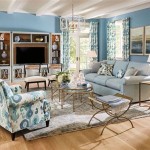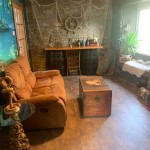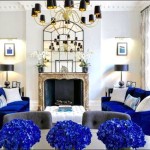Historic Home Decorating Ideas
Decorating a historic home presents a unique opportunity to celebrate architectural heritage while creating a comfortable and stylish living space. This requires a delicate balance between preserving historical integrity and incorporating modern functionality. Understanding the home's architectural style and its historical context is crucial for making informed decorating decisions.
Research plays a vital role in the process. Consulting local historical societies, architectural archives, and period publications can provide invaluable insight into original paint colors, wallpaper patterns, textile designs, and furniture styles. This information helps in creating an authentic and historically accurate interior.
Choosing the right color palette is essential for setting the historical tone. Period-appropriate colors can significantly enhance the architectural details and create a cohesive atmosphere. Researching original paint colors used in similar homes from the same era can offer guidance. Neutral hues, such as creams, beiges, and muted greens, were often favored in older homes and can serve as a versatile base for incorporating bolder accent colors.
Wallpaper can greatly contribute to a historic home's ambiance. Period-specific patterns, such as William Morris designs or Art Deco motifs, can add authenticity and visual interest. Consider using wallpaper in specific areas like dining rooms, hallways, or bedrooms to create focal points. Alternatively, using wallpaper borders or dado rails can provide a subtle nod to historical styles without overwhelming the space.
Flooring choices should complement the home's architectural style. Original wood floors, if present, should be preserved and refinished if necessary. Wide plank flooring, particularly in pine or oak, was common in older homes and contributes to the historic aesthetic. If original flooring is not salvageable, consider using reclaimed wood or new flooring that replicates period-appropriate styles.
Selecting appropriate furniture is key to achieving a cohesive historical look. Antique or vintage pieces from the corresponding era can add authenticity and character. Reproduction furniture can also be a viable option when original pieces are unavailable or unaffordable. Focus on furniture styles that reflect the home’s architectural period, such as Victorian, Arts and Crafts, or Colonial Revival.
Window treatments play a significant role in both aesthetics and functionality. Consider using period-appropriate fabrics, such as linen, silk, or damask, for curtains and drapes. Traditional window treatments, like Roman shades, roller blinds, or Austrian valances, can complement the historical style. Consider the amount of natural light desired and choose fabrics and styles that balance light control with historical accuracy.
Lighting fixtures contribute significantly to the overall ambiance. Period-appropriate lighting, such as chandeliers, sconces, and oil lamps (converted for electrical use), can enhance the historical atmosphere. Reproduction lighting fixtures offer an accessible alternative to antique pieces. Consider the function of each room and choose lighting fixtures that provide adequate illumination while maintaining the historical aesthetic.
Decorative accessories provide the finishing touches to a historic home's interior. Incorporating antique or vintage items, such as clocks, mirrors, paintings, and pottery, can add authenticity and personality. Selecting accessories that reflect the home’s historical period and complement the overall design scheme helps create a cohesive and curated look.
Textiles, including rugs, curtains, upholstery, and throw pillows, add warmth and texture to a historic interior. Choosing period-appropriate fabrics and patterns enhances the historical ambiance. Natural fibers, such as wool, linen, and cotton, were commonly used in older homes and contribute to the authentic look and feel.
Preserving original architectural details is paramount in a historic home. Features such as moldings, fireplaces, built-in bookcases, and stained glass windows should be highlighted and restored whenever possible. These details contribute significantly to the home’s historical character and should be considered integral elements of the decorating scheme.
Modern conveniences can be seamlessly integrated into a historic home without compromising its historical integrity. Careful planning and thoughtful selection of appliances, fixtures, and technology can ensure that modern amenities blend harmoniously with the historical aesthetic. Consider concealing modern appliances behind cabinet panels or choosing appliances with a retro design.
Maintaining a balance between historical accuracy and modern living is crucial in decorating a historic home. Prioritizing functionality and comfort while respecting the home's historical significance ensures a space that is both beautiful and livable. This approach allows for a harmonious blend of old and new, creating a space that honors the past while embracing the present.
Adaptability is key when decorating a historic home. While adhering to period-specific guidelines is important, allowing for personal preferences and contemporary needs ensures a comfortable and functional living space. The goal is to create a space that reflects the home's history while meeting the needs of modern living.

Making The Most Of Your Historic Home

Making The Most Of Your Historic Home

Tour A Historic Savannah Row House On Beautiful Monterey Square Homes

Making The Most Of Your Historic Home

This House Is Full Of History With Modern Touches The Everygirl

10 Decorating Tips For Older Homes

Making The Most Of Your Historic Home

Ad S Ultimate Guide To Interior Decorating Architectural Digest

17 Beautiful Southern Homes 2025 Decorating Ideas

Home Decor Ideas Best Room Decorating
Related Posts







